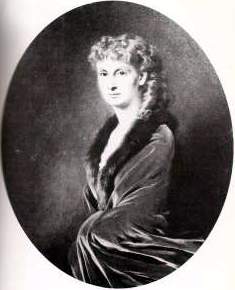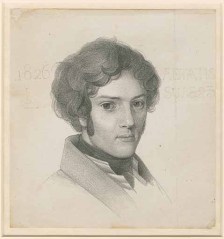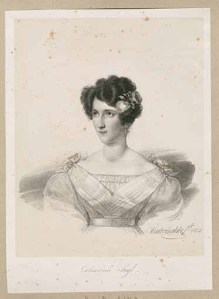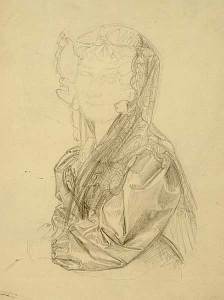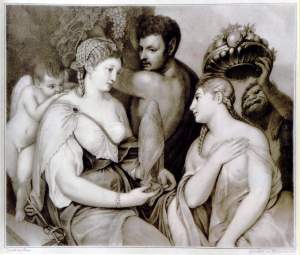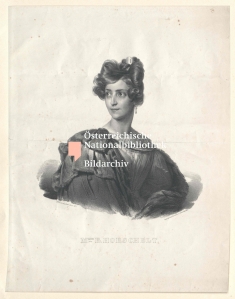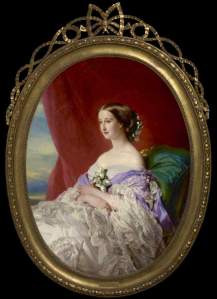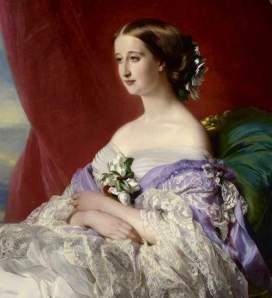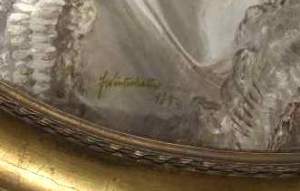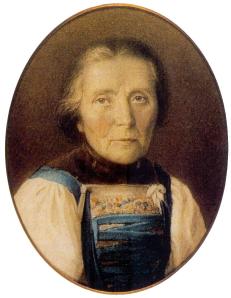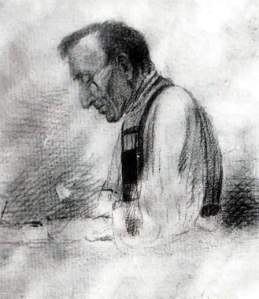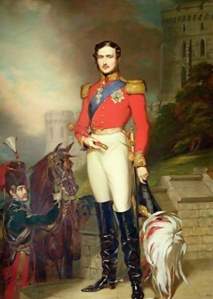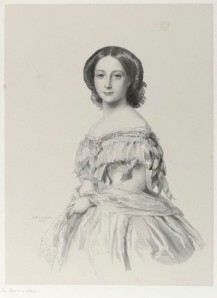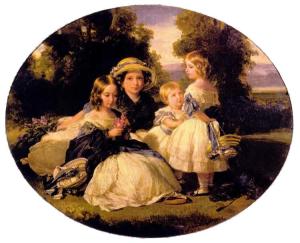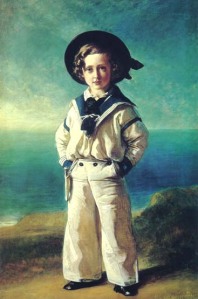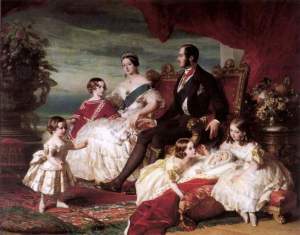Franz Xaver Winterhalter – Catalogue Updates – Portrait of Duchesse de Morny
I am pleased to add a new image to my website – a portrait of Duchesse Sophie de Morny (1838-96). The image appeared in a blog entry at http://oliaklodvenitiens.wordpress.com; and I was alerted to its existence by a colleague and fellow Winterhalter enthusiast, Emmanuel Burlion (thank you!).
Unfortunately, no further information about the date, size, provenance, history, or current location of this portrait is available at the moment.
However, it is most likely to be a portrait referred to in the posthumous list of works compiled by Franz Xaver Winterhalter’s nephew, Franz Wild, as La Duchesse de Morny, velour bleu, 1868 (cf. Wild 1894, 45; Winterhalter 1987/88, 235 (no 371); Barilo von Reisberg 2007, no 846).
The research indicates that Winterhalter painted the Russian-born Duchesse de Morny on at least five separate occasions (see catalogue entries nos 725, 752, 781, 804, 846). Of these, only one portrait was previously identified with any certainty: no 752 (1863, oil on canvas, 94 x 73 cm, Musée National du Château de Compiègne). Another portrait, no 804 (c. 1865, oil on canvas) appeared in an 1866 watercolour by Jean Sorieul (1824-71) of the bedroom study of the Duc de Morny at the Hôtel de Lassay (collection Pierre Fabius, Paris, 1978) and was later reproduced in a c. 1920s Spanish publication on 19th-Century painting as being in a Private Collection. Its present location and further information remain unknown.
It is therefore a thrill to add such a rare find as another image by Franz Xaver Winterhalter to my repository of knowledge on the artist. It is now placed on the https://franzxaverwinterhalter.wordpress.com/franz-xaver-winterhalter-works-1866-1873/ page of the catalogue under no 846.
© Eugene Barilo von Reisberg, 2012
